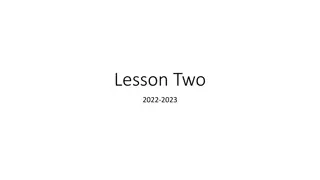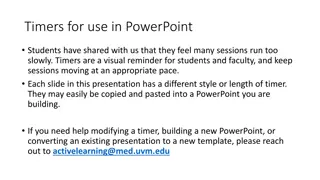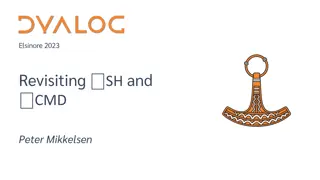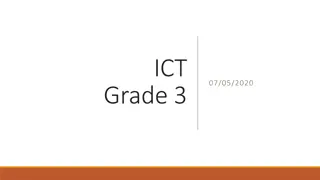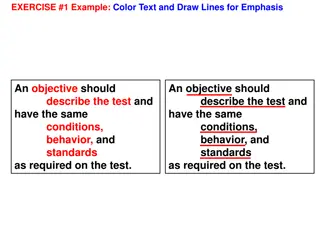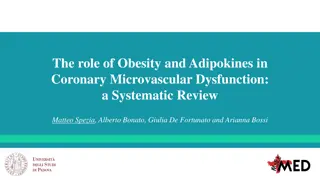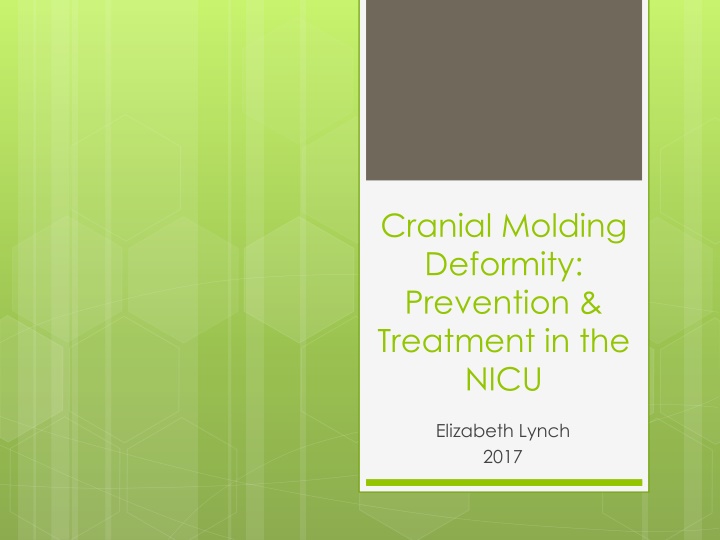
Cranial Molding Deformity in Newborns
Learn about the prevalence, types, and risk factors related to Cranial Molding Deformity (CMD) in newborn infants. Explore the causes, prevention, and treatment options for this condition.
Download Presentation

Please find below an Image/Link to download the presentation.
The content on the website is provided AS IS for your information and personal use only. It may not be sold, licensed, or shared on other websites without obtaining consent from the author. If you encounter any issues during the download, it is possible that the publisher has removed the file from their server.
You are allowed to download the files provided on this website for personal or commercial use, subject to the condition that they are used lawfully. All files are the property of their respective owners.
The content on the website is provided AS IS for your information and personal use only. It may not be sold, licensed, or shared on other websites without obtaining consent from the author.
E N D
Presentation Transcript
Cranial Molding Deformity: Prevention & Treatment in the NICU Elizabeth Lynch 2017
What is Cranial Molding Deformity (CMD)?1,2 Alteration in the normocephalic shaping of the skull Due to an external mechanical force Generally mild and reversible
Prevalence of CMD1,2 Up to 48% of newborn infants Newborns are particularly susceptible Younger age = increased malleability of the skull
Abnormal Cranial Shapes DOLICHOCEPHAL Y
Plagiocephaly3,4,5 Oblique head Unilateral flattening of the occiput Peak prevalence is 4 months of age
Cranial Vault Asymmetry Index6,7 CVAI < 3.5 WNL CVAI > 3.5 Plagiocephaly
Brachycephaly4,5 Symmetrical deformity Bilateral flattening of the posterior cranium Skull appears wider and more spherical
Dolichocephaly8 Long head Also referred to as scaphocephaly Skull becomes longer and more narrow
Cranial Index6,8,9 CI < 76% Dolichocephaly 76% CI < 93% WNL CI 93% Brachycephaly
Back to Sleep10 1992: American Academy of Pediatrics 1994: U.S. Public Health Service SIDS CMD
Torticollis1,5 CMD
Additional Risk Factors Plagiocephaly Male5,11 Gestational Diabetes11 First-born rank5,11 Intrauterine constraint5 Assisted Delivery5,11 Neck problems5 Multiple Pregnancy11 Supine Position5 Prematurity12 Dolichocephaly Female12 Breech Position1 Extended Hospitalization at Birth12 Prematurity12 Brachycephaly Intrauterine constraint11 Supine Position13
Prematurity12 Very preterm infants: (Born at <32 weeks gestational age) 38% plagiocephaly 73% dolichocephaly Late preterm infants: (Born between 32 and 36+6 weeks) 28% dolichocephaly
Currently used in NICUs14 Blanket Rolls Frederick T. Frog DandleROO, DandleROO2, DandleROO Lite, or DandleWrap Sundance Fluidized Full-body Mattress or Tube (a.k.a. Zflo ) Sundance Fluidized Utility Pillow Gel-E Donut Tortle Midliner / Tortle Air
Frederick T. Frog15 Frog-shaped device that contains adjustable beads Supports developmental head positioning in prone, supine, and side-lying
Gel-E Donut16,17 Gel-filled pillow with non-porous skin Used to promote skin integrity and prevent CMD due to prolonged immobility
Fluidized Full-body Mattress18 Fluidized, mattress- like device Zero flow from gravity Supports the entire body in prone, supine, or side-lying
Fluidized Utility Positioner18,19 Fluidized, pillow- shaped device Zero flow from gravity Supports the head, neck, and shoulders in prone, supine, or side-lying
DandleROO20,21 Containment device made of stretchable cotton Designed to simulate womb-like environment for preterm infants
Tortle Midliner22 Lightweight beanie with two adjustable support rolls Used to prevent head preference issues and asymmetry Smaller infants ( 3000 g)
Tortle Air22 Lightweight beanie with one adjustable support roll Used to prevent head preference issues and asymmetry Larger infants ( 9000 g)
Cranial Cup19,23 Orthotic device with layers of removable foam Supports the body in supine and semi- side-lying positions Designed for infants 1000 g
Evidence for Intervention17 McLane et al Descriptive pilot study of 54 healthy children To compare interface pressures of various pediatric support surfaces A 2.75-inch Delta foam overlay alone and in conjunction with the Gel-E Donut produced the lowest occipital pressure in infants <2 years of age
Evidence for Intervention21 Zarem et al Survey of 76 neonatal nurses and therapists To determine perceptions of positioning for premature infants in the NICU DandleROO ideal method of neonatal positioning 62% of nurses and 86% of therapists DandleROO easiest method of positioning to utilize in the NICU 44% of nurses and 57% of therapists
Evidence for Intervention19 Degrazia et al RCT to assess the effectiveness of the cranial cup in preventing CMD in hospitalized infants Experimental Group: moldable positioner and cranial cup (n = 35) Control Group: moldable positioner (n = 27) Rotating between the Sundance fluidized utility positioner and the cranial cup is associated with decreased development of CMD in the NICU compared to use of the fluidized utility positioner alone
Evidence for Intervention23 Knorr et al Prospective descriptive study To assess the effectiveness of the cranial cup in correcting CMD in hospitalized premature infants The cranial cup is effective for normalizing head shape in hospitalized premature infants BUT: No control group for comparison
Overall Evidence is lacking in regards to positioning devices that are commonly utilized with premature infants in NICUs However, intervention early in life is very important for optimal outcomes in the prevention and treatment of CMD *Patient-centered* - focus on what s best for each individual baby
Future Research High quality RCTs and systematic reviews of RCTs increase the level of evidence Specificity regarding intervention protocols improve clinical relevance Long-term follow up determine effects of interventions over time
References Bronfin DR. Misshapen Heads in Babies: Position or Pathology?. The Ochsner Journal. 2001;3(4):191-199. Steinberg J, Rawlani R, Humphries L, et al. Effectiveness of Conservative Therapy and Helmet Therapy for Positional Cranial Deformation. Plastic and Reconstructive Surgery. 2015;135(3):833-842. doi:10.1097/prs.0000000000000955. Persing J, James H, Swanson J, Kattwinkel J. Prevention and Management of Positional Skull Deformities in Infants. PEDIATRICS. 2003;112(1):199-202. doi:10.1542/peds.112.1.199. Feijen M, Franssen B, Vincken N, van der Hulst R. Prevalence and Consequences of Positional Plagiocephaly and Brachycephaly. Journal of Craniofacial Surgery. 2015;26(8):e770-e773. doi:10.1097/scs.0000000000002222. Looman W, Kack Flannery A. Evidence-Based Care of the Child With Deformational Plagiocephaly, Part I: Assessment and Diagnosis. Journal of Pediatric Health Care. 2012;26(4):242-250. doi:10.1016/j.pedhc.2011.10.003. Wilbrand J, Schmidtberg K, Bierther U. Clinical Classification of Infant Nonsynostotic Cranial Deformity. The Journal of Pediatrics. 2012;161(6):1120-1125.e1. doi:10.1016/j.jpeds.2012.05.023. Plagiocephaly Severity Scale. Atlanta, GA: Children's Healthcare of Atlanta; 2015. Available at: https://pediatricapta.org/special-interest-groups/HB/ORTH_961942_PlagiocephalyScale_BWInfo.pdf. Accessed March 1, 2017. McCarty D, Peat J, Malcolm W, et al. Dolichocephaly in Preterm Infants: Prevalence, Risk Factors, and Early Motor Outcomes. American Journal of Perinatology. 2016;34(04):372-378. doi:10.1055/s-0036-1592128. Hutchison B, Hutchison L, Thompson J, Mitchell E. Quantification of Plagiocephaly and Brachycephaly in Infants Using a Digital Photographic Technique. The Cleft Palate-Craniofacial Journal. 2005;42(5):539-547. doi:10.1597/04-059r.1. Changing Concepts of Sudden Infant Death Syndrome: Implications for Infant Sleeping Environment and Sleep Position. PEDIATRICS. 2000;105(3):650-656. doi:10.1542/peds.105.3.650. 1. 2. 3. 4. 5. 6. 7. 8. 9. 10.
References Aarnivala H, Valkama A, Pirttiniemi P. Cranial shape, size and cervical motion in normal newborns. Early Human Development. 2014;90(8):425-430. doi:10.1016/j.earlhumdev.2014.05.007. Ifflaender S, R diger M, Konstantelos D, et al. Prevalence of head deformities in preterm infants at term equivalent age. Early Human Development. 2013;89(12):1041-1047. doi:10.1016/j.earlhumdev.2013.08.011. Deformational Plagiocephaly & Cranial Remolding In Infants. Alexandria, VA: APTA Section on Pediatrics; 2007. Available at: https://pediatricapta.org/includes/fact-sheets/pdfs/Plagiocephaly.pdf. Accessed March 5, 2017. McCarty DM, Eberbach M, Peat J. Therapeutic Practices for Cranial Molding Deformity in the Neonatal Intensive Care Unit: A National Survey. Manuscript in preparation. 2017. Philips Frederick T. Frog. Philips. 2017. Available at: http://www.usa.philips.com/healthcare/product/HC989805603341/frederick-t-frog-positioning-aid. Accessed March 17, 2017. Philips Gel positioning aids. Philips. 2017. Available at: http://www.usa.philips.com/healthcare/product/HC92025/gel-positioning-aids-family-of-gelfilled-infant- positioning-products. Accessed March 17, 2017. McLane K, Krouskop T, McCord S, Fraley J. Comparison of Interface Pressures in the Pediatric Population Among Various Support Surfaces. Journal of Wound, Ostomy and Continence Nursing. 2002;29(5):242-251. doi:10.1097/00152192-200209000-00007. NICU Therapeutic Positioning. Sundance Solutions. 2017. Available at: http://sundancesolutions.com/neonatal/. Accessed March 17, 2017. DeGrazia M, Giambanco D, Hamn G, Ditzel A, Tucker L, Gauvreau K. Prevention of Deformational Plagiocephaly in Hospitalized Infants Using a New Orthotic Device. Journal of Obstetric, Gynecologic & Neonatal Nursing. 2015;44(1):28-41. doi:10.1111/1552-6909.12523. Dandle ROO. Dandle LION Medical. 2017. Available at: http://www.dandlelionmedical.com/products/dandle-roo/. Accessed March 18, 2017. 11. 12. 13. 14. 15. 16. 17. 18. 19. 20.
References 21. Zarem C, Crapnell T, Tiltges L, et al. Neonatal Nurses' and Therapists' Perceptions of Positioning for Preterm Infants in the Neonatal Intensive Care Unit. Neonatal Network: The Journal of Neonatal Nursing. 2013;32(2):110-116. doi:10.1891/0730-0832.32.2.110. 22. Home - Tortle Medical. Tortle Medical. 2017. Available at: http://tortlemedical.com. Accessed March 18, 2017. 23. Knorr A, Gauvreau K, Porter C, Serino E, DeGrazia M. Use of the Cranial Cup to Correct Positional Head Shape Deformities in Hospitalized Premature Infants. Journal of Obstetric, Gynecologic & Neonatal Nursing. 2016;45(4):542-552. doi:10.1016/j.jogn.2016.03.141. Additional Images: Helmet Therapy | The Craniofacial Foundation of Utah. Cranioutahcom. 2017. Available at: http://cranioutah.com/helmet-therapy/. Accessed March 20, 2017. Head Shape Deformities - EARLYstart. EARLYstart. 2017. Available at: http://earlystartpt.com/early-signs-to-look-for/head-shape-deformities/. Accessed March 20, 2017. Actionorthosante.ca/english. Actionorthosante.ca. 2017. Available at: http://actionorthosante.ca/english/Plagiocephaly-Severity-Scale.php. Accessed March 20, 2017. Aiga A. Treating Torticollis and Plagiocephaly - Lucie's List. Lucie's List. 2017. Available at: https://www.lucieslist.com/lucies-list-blog/2014/07/29/treating-torticollis-and-plagiocephaly/. Accessed March 24, 2017. Plagiocephaly and Baby Flat Head Syndrome Treatment Band - Cranial Technologies. Cranial Technologies. 2017. Available at: http://www.cranialtech.com. Accessed March 24, 2017.
Questions? Thank You


